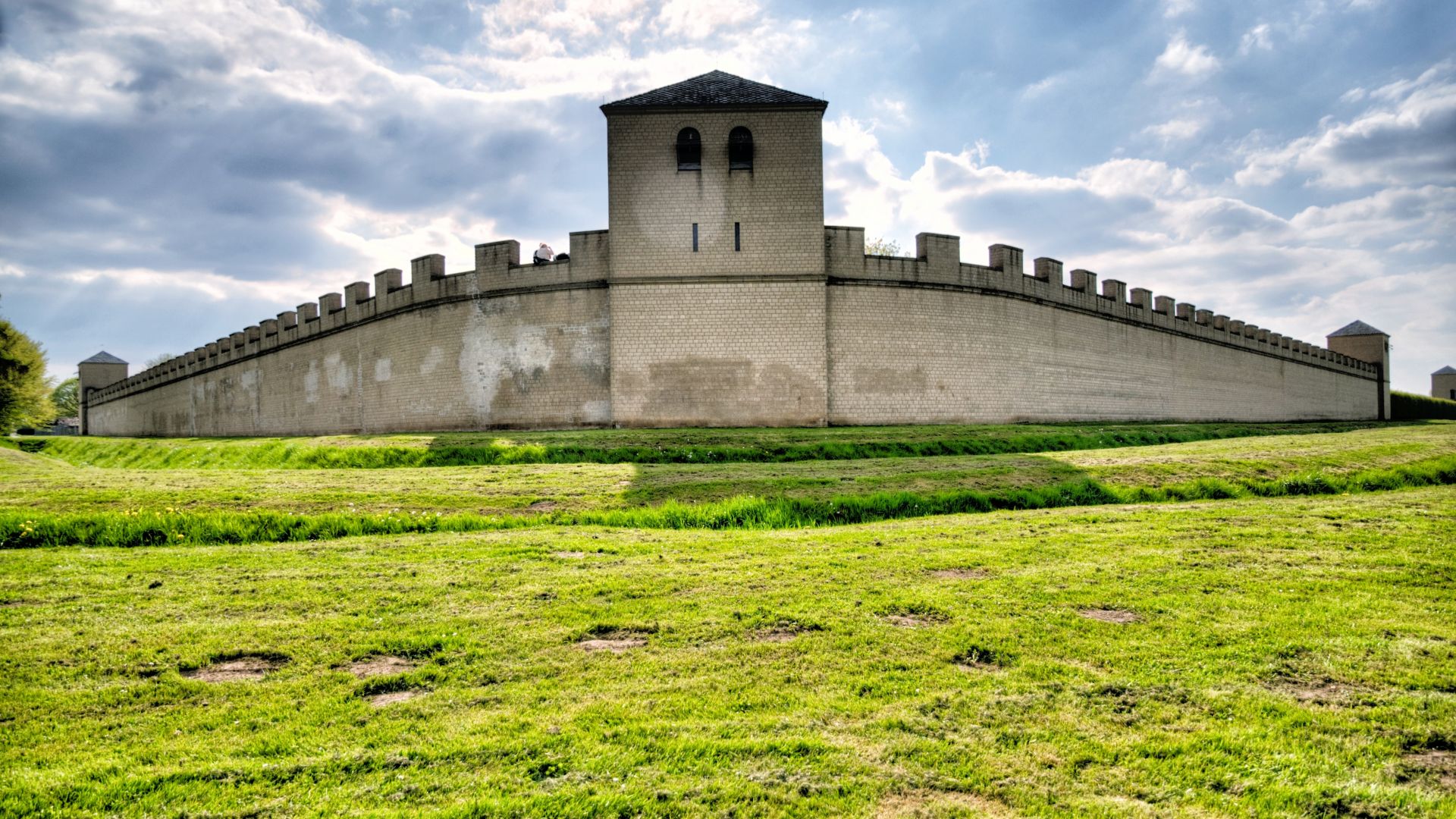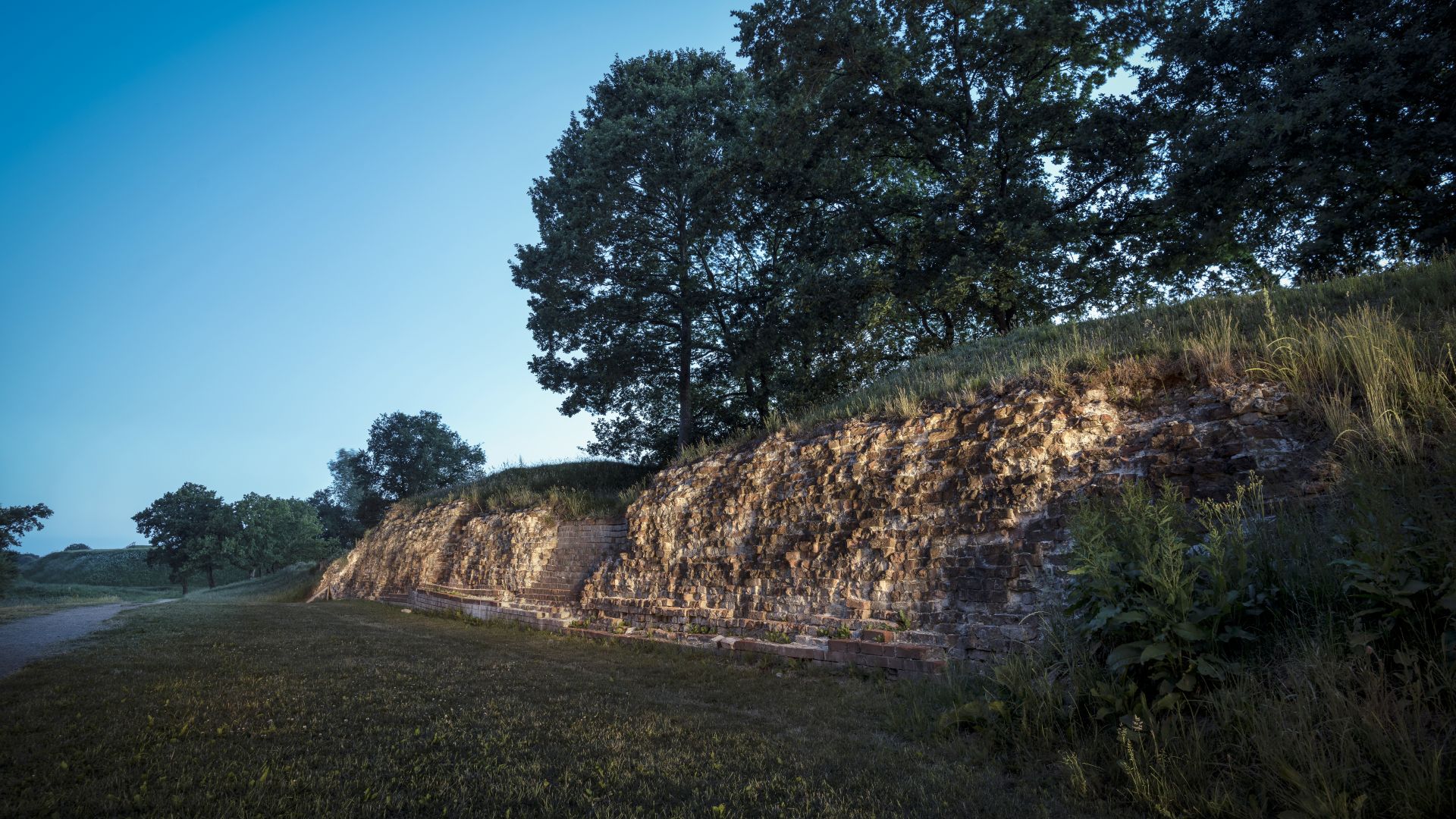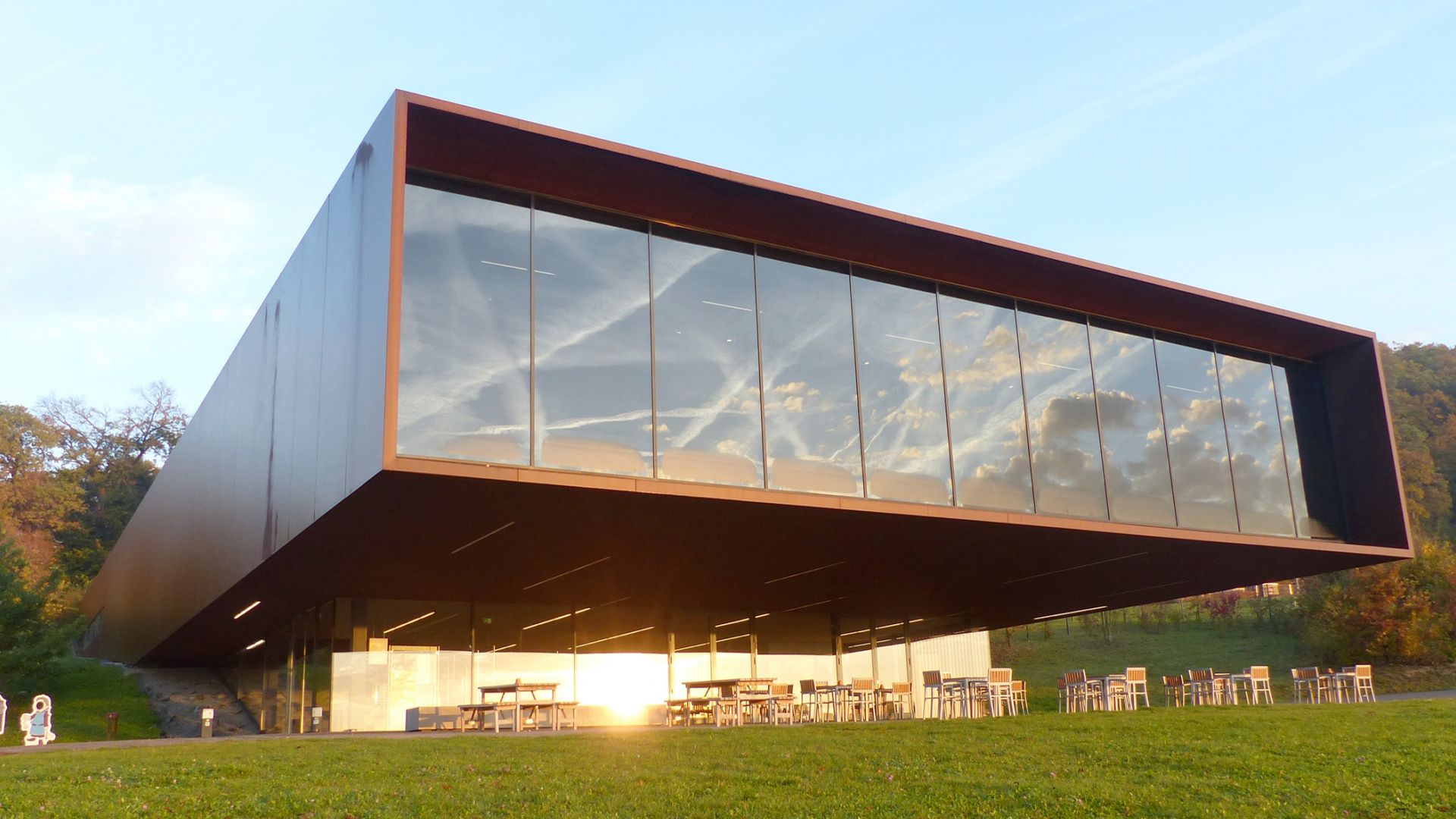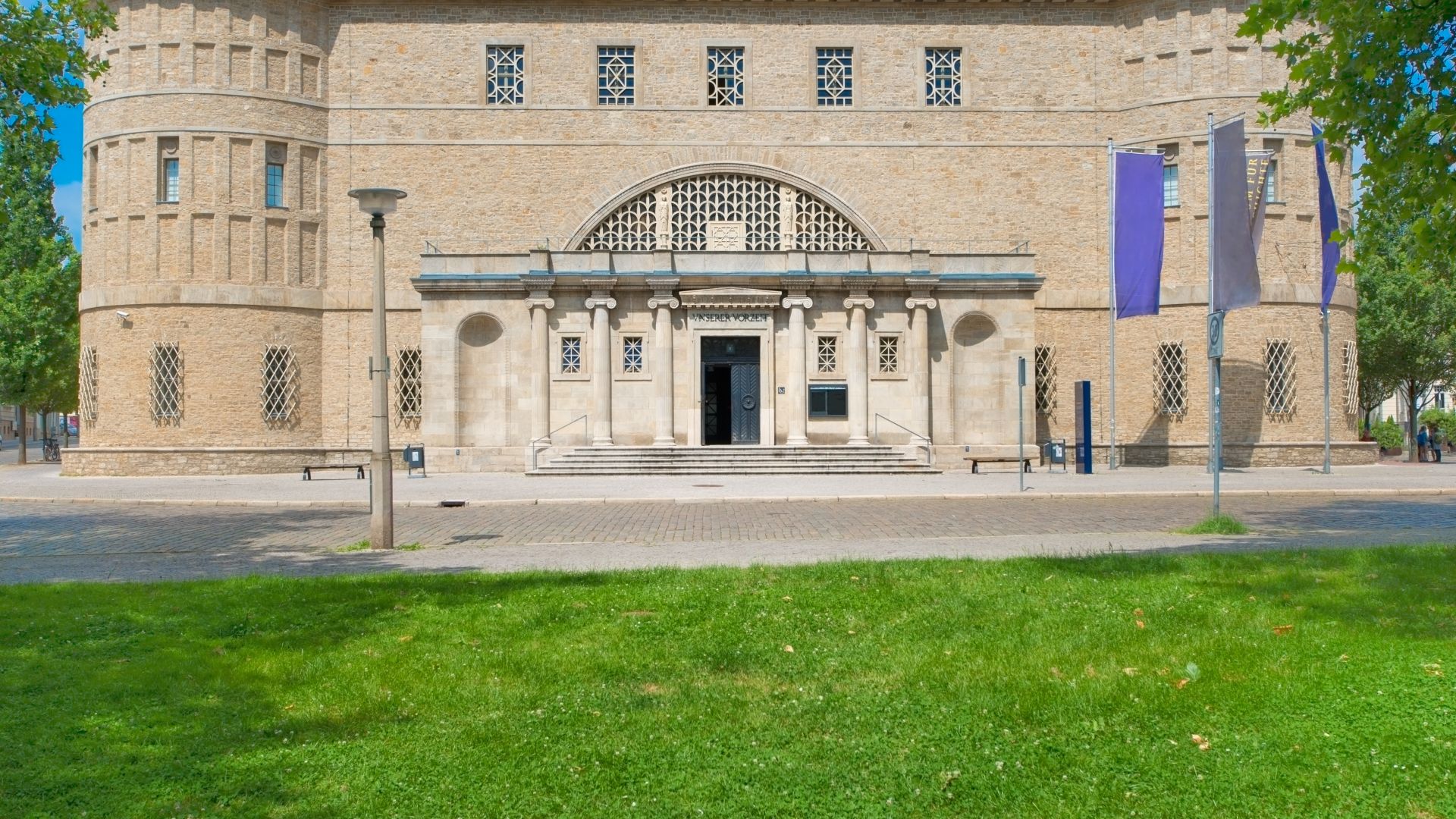Cities & Culture
Archaeological museums: Celts, Romans, Vikings
Who lived on German soil hundreds, even thousands of years ago? And how? A fascination for the ancient Romans, Celts, Germanic tribes and Vikings continues to thrive, especially since dedicated museums are constantly excavating and gaining new insights to provide an ever more detailed insight into the past.
Xanten Archaeological Park: a paradise for fans of the ancient Romans
 Xanten: Roman Wall in the Archaeological Park in Xanten
©Getty Images (Ventura Carmona)
Xanten: Roman Wall in the Archaeological Park in Xanten
©Getty Images (Ventura Carmona)
Is there anything that the Xanten Archaeological Park's huge amphitheatre hasn't seen? Rock concerts, musicals, operas - and frequently the Roman festival "Swords, Bread and Games" which attracts around 500 participants all by itself. There is plenty of space: this 60-hectare site on the Lower Rhine is Germany's largest open-air archaeological museum (and since 2021 part of the UNESCO World Heritage Site "Frontiers of the Roman Empire – The Lower German Limes"). The site of Colonia Ulpia Traiana, the third largest Roman city north of the Alps after Trier and Cologne, has been undergoing excavation and reconstruction since the 1970s. In the process, life-size models were created at the original location: the amphitheatre, as well as craftsmen's houses, the harbour temple, the city wall and the hostel. The centrepiece is the LVR Roman Museum in Xanten, which moved to the site in 2008.. The modern museum building made of steel and glass, which is built over the foundations of the entrance hall to the thermal baths, presents a vivid picture of everyday Roman life in Germania with numerous exhibits and contemporary media. Highlights include the remains of a ship suspended in the open space and a magnificent wall mural. There are special hands-on activities for children: they can listen to gladiators, sniff out scents in the thermal baths and put on the armour of a legionary.
Danevirke Museum: northern Europe's gigantic stronghold
 Dannewerk: Danevirke Archaeological Park, Waldemar Wall, UNESCO World Heritage
©Lookphotos (Günther Bayerl)
Dannewerk: Danevirke Archaeological Park, Waldemar Wall, UNESCO World Heritage
©Lookphotos (Günther Bayerl)
Together with the important Viking settlement of Hedeby, a UNESCO World Heritage Site since 2018, the Danewerk is considered to be the largest archaeological monument in northern Europe. From the Iron Age to the High Middle Ages, the approximately 30-kilometre-long fortification was used for more than 700 years and was even expanded in the 19th century. The Danevirke Museum Visitor Centre, housed in a farmhouse, offers information on the construction of this extraordinary defensive fortification and its eventful history. Another point of interest: Who were the Danish Viking rulers actually trying to set themselves apart from? Answer: against the expanding Christian Frankish Empire, to name one example. Speaking of expansion: The modernisation of the museum will be completed by 2024 - including a new building, new outdoor facilities and a new permanent exhibition that, at around 800 square metres, will be more than twice the size of the one before. The location remains the same, in the middle of the Danevirke Archaeological Park. This is not only home to wonderful cycling and walking paths, but also to five of the greatest highlights of the Danewerk within one small area: the ancient main wall, the Thyraburg fortress, the 1,200-year-old "Gateway to the North" (an exciting find in 2010), the "brick" Waldemar Wall and a reconstructed cannon entrenchment from the German-Danish War of 1864.
The World of the Celts in Glauberg: the Hessian Stonehenge
 Glauburg: Hesse State Archaeological Museum, Celtic World on Glauberg
©Keltenwelt am Glauberg (Keltenwelt am Glauberg)
Glauburg: Hesse State Archaeological Museum, Celtic World on Glauberg
©Keltenwelt am Glauberg (Keltenwelt am Glauberg)
You can't deny the "Prince of Glauberg's" slight resemblance to Mickey Mouse. The former has about 2,500 years' more sandstone behind him. However, scientists have not yet been able to conclusively explain what his giant ears signify (possibly a crown of leaves). In any case, the life-size statue, an archaeological sensation when it was discovered in 1996, is the highlight of the "Glauberg World of the Celts". The excavations in the 37-hectare archaeological park in the Wetterau region, which continue to this day, have uncovered further evidence: a 1.5-kilometre-long circular wall, a ramp interpreted as a processional route and much more. Anyone walking along the "Celtic Experience Trail" can find out more about these various finds on 20 information boards. The Celtic prince is on display in the museum, which opened in 2011, alongside golden chokers, bronze bangles and other exhibits. Meanwhile, through the panoramic windows of the award-winning exhibition building, visitors gaze straight up at a large, walk-in burial mound, in front of which 16 oak posts rise 11 metres into the sky. The stakes in the ground may have once formed a sundial. Or did they? This, too, remains up for debate. Keeping silent in that place is not a bad idea in any case. The expansive view, the diverse flora and above all the mysticism that surrounds the Celtic ritual site have an impact even without much explanation.
State Museum of Prehistory in Halle: ancient exhibits presented in a modern way
 Halle: State Museum of Prehistory
©Adobe Stock (Uwe Bumann)
Halle: State Museum of Prehistory
©Adobe Stock (Uwe Bumann)
The famous "Nebra Sky Disk", estimated to be over 3,600 years old, is considered to be the oldest recorded representation of the heavens known to humankind. Declared a UNESCO Documentary Heritage Site in 2013, it is the star of the State Museum of Prehistory, which is known far beyond the borders of Saxony-Anhalt and Germany. But the impressive museum building, modelled on the Porta Nigra in Trier – incidentally the first building in the country designed exclusively to exhibit prehistoric finds – has much more to offer with its "Rider's Stone of Hornhausen", ancient silver rings and helmets, objects from Martin Luther's household and thousands of other exhibits. To be honest, thanks to its enormous collection, if you're interested in the Stone, Bronze, Iron, Roman Imperial and Early Modern periods, you won't find a better place to visit anywhere else. Does this mean that the permanent exhibition, completed and modernised in 2021, as well as the museum's special shows, will be aimed primarily at a specialist audience, or at least visitors with prior knowledge? Not at all: the museum explicitly wants to target experts as well as amateurs, including children – which works well with its modern teaching methods.